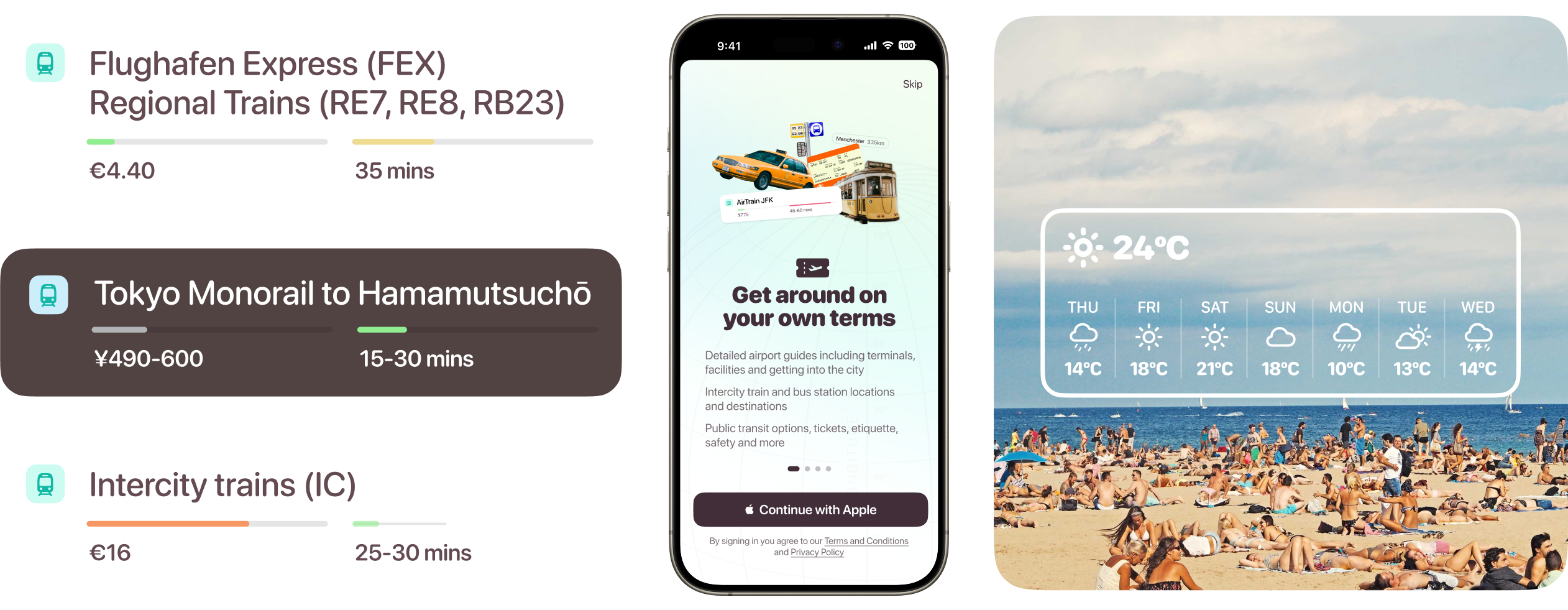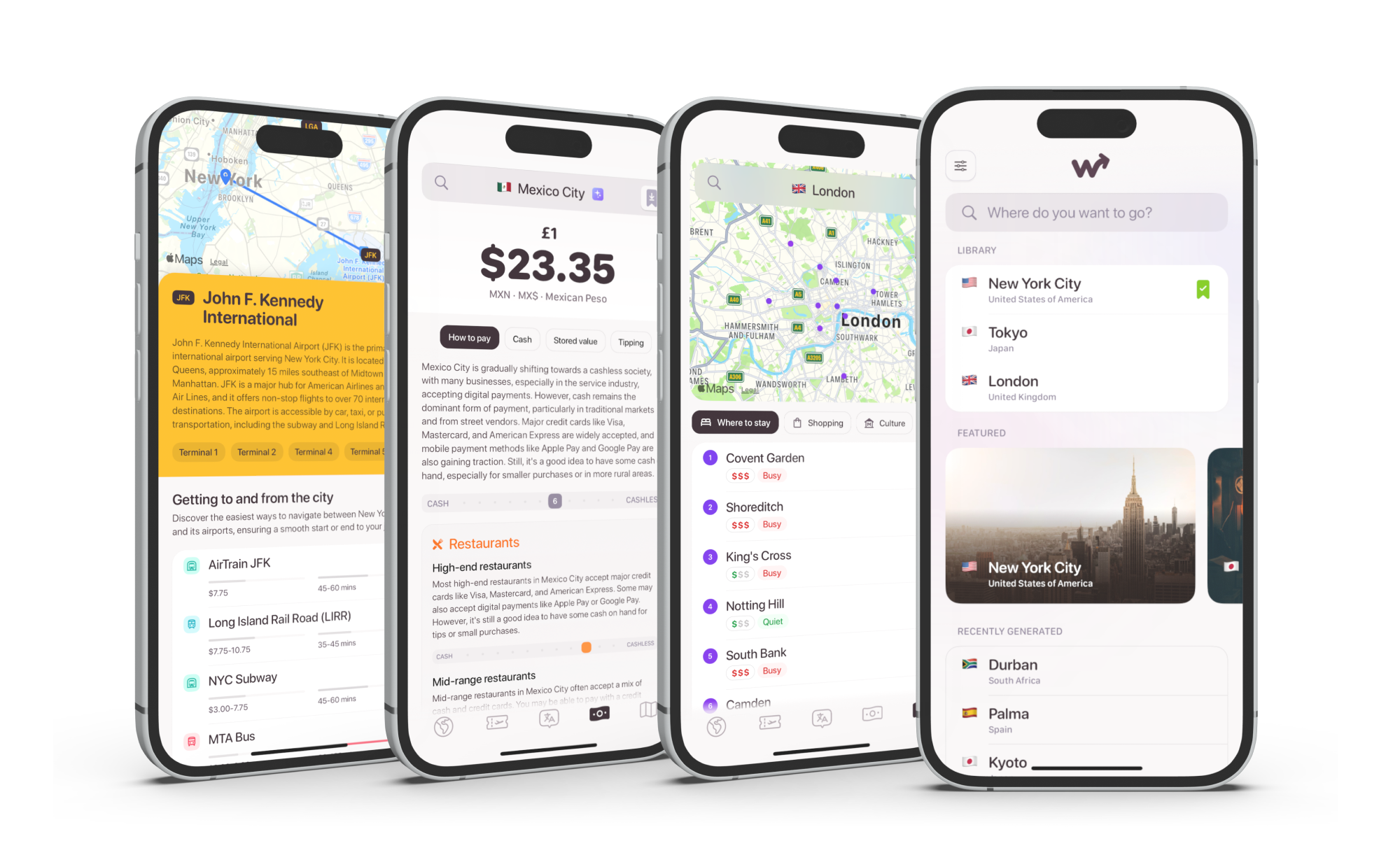Case study
Waywise: AI-powered travel guides for socially responsible travellers
- Product design
- React Native
- RevenueCat
- Go
- PostgreSQL
- Docker
- Google Cloud Run
- OpenAI GPT-4.1
- Meta Llama 3.2
Most digital travel tools focus on bookings and reviews. The traditional guidebook market is underserved in the space and I wanted to provide a modern alternative, to create a tool that puts essential information directly into the hands of the traveller. I had three main product goals: building a back end that could generate and serve a travel guidebook for any city in minutes, ensuring the generated content was high-quality and genuinely useful, and delivering a polished, offline-ready iOS app.
Building for scale
Pivoting from a niche idea
The app started life as a much smaller, language-focused tool. I realised the bigger opportunity was to build a full travel guidebook, but the principle remained the same: start with a solid foundation. To do so I needed to break the problem down into smaller, manageable parts.
Given this was a completely new product built from scratch — I decided to focus entirely on the core guide generation engine and the four main content categories: transport, money, language, and neighbourhoods. I wanted a solid, functioning AI pipeline in place before I layered more complex features like subscriptions or user accounts on top.
Piecing the engine together
A key challenge was ensuring the quality and accuracy of the AI-generated content. Relying on a single large language model (LLM) for everything could be expensive and sometimes produced inconsistent output or factual errors. When dealing with practical travel advice, reliability is critical.
This wasn't a problem for a simple language app, but it was a dealbreaker for a more comprehensive guidebook. I used a combination of Llama 3 for its strength in creating well-written, narrative text, and GPT-4 for more structured, factual data extraction. This dual-model approach significantly improved the reliability and cost-effectiveness of the guide generation.
Building a native experience
I chose React Native, more specifically Expo, to build the app's front-end. This approach allowed for rapid development and, as a solo developer, provided an efficient way to build a high-quality native experience while maintaining flexibility for future expansion. The focus was on creating a clean, fast interface that feels entirely native on iOS.
A critical requirement for a travel app is offline access. Travellers can't rely on having a constant data connection. To solve this, I implemented a robust local storage system. When a user generates or unlocks a guide, the content is saved directly to their device. This ensures all their essential information, from transport maps to neighbourhood details, is available instantly; whether they're on a plane or exploring a remote part of a city.

The final product
After a year of development and several iterations, the result is a well-performing baseline. The foundational AI system for generating guides is in place, and the app is live on the App Store. This allows me to gather valuable feedback, continue to refine the AI, and start to introduce other core features to the experience.
